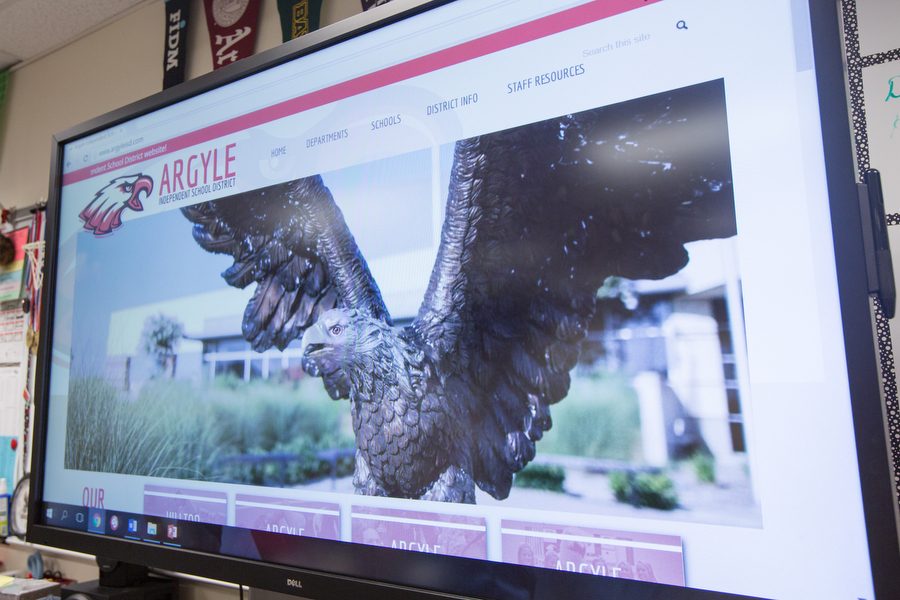New Monitors Introduced in All Campus Classrooms
©The Talon News | Caleb Miles
Classes incorporate their lesson plans using the new Dell monitors on Wednesday, Sep. 6 at Argyle High School in Argyle, TX. (Caleb Miles / The Talon News)
September 13, 2016
Every AISD classroom started the year equipped with a Dell C7017T monitor, an interactive screen that can be used by teachers to enhance classroom learning. The district purchased the monitors with money set aside in the 2014 Bond Package for all three campuses.
“Part of the money was set aside in the bond for upgrading display devices in the classrooms since the projectors were aging,” technology director Greg Royar said. “We felt the screens offered many capabilities that other options we were looking into did not.”
Dell announced the release of the new monitors June 27, 2016.
“I believe other schools have ordered [the screens], but we are the first educational enterprise in the world to get them,” Royar said.
Unlike the projectors which worked in conjunction with the whiteboards, the monitors are mounted on a metal cart.
“You can put them anywhere in the room and move them aside when you don’t need them,” principal James Hill said. “It gives teachers the flexibility to arrange their rooms however is best for them.”
Dell’s C7017T’s have 10-point hand touch capabilities and do not require a stylus or pen to engage.
“I used to only be able to interact on the whiteboard if I had my mimio hooked up, which didn’t always work and had to be calibrated,” biology teacher Deserae Good said. “[The monitors] work without any of those issues.”
Many students also voiced their positive opinions of the technology upgrade.
“The clarity that you find in the tvs just can’t be matched by the projectors,” sophomore Audrey Livingston said. “I think they are a very beneficial thing to have in the classroom because the students can also write on them.”
While the monitors have been well accepted, the technology does leave room for improvement.
“We have a group of teachers that really want to go forward with the wireless initiative,” Royar said. “We are looking into a Chromebit device, which turns the entire tv into a Chromebook itself that teachers can connect to wirelessly.”
Hill expressed that the addition of the monitors will also help students post-high school.
“[Students] are going to have to use technology applications in the workforce, so why not bring that into the classroom where [they] have an opportunity to learn about them,” Hill said. “That way, they’re prepared when they go out looking for jobs. 96 percent of our students go to college, and they’ll be using technology applications. The more we can expose [students] to [technology], the better.”
At the North Texas Association of Technology Directors, Royar gets the opportunity to see how schools of all sizes incorporate new applications and technology into classrooms. Here, Royar often finds inspiration for future technology to introduce to AISD, such as the monitors.
“It’s pretty exciting to see we are putting in place procedures and practices of schools larger than ours,” Royar said. “Even though we have kinks here and there, we are so far ahead of other schools our size–and that’s exciting to see. I would rather be the school setting the example than the one always trying to catch up.”







